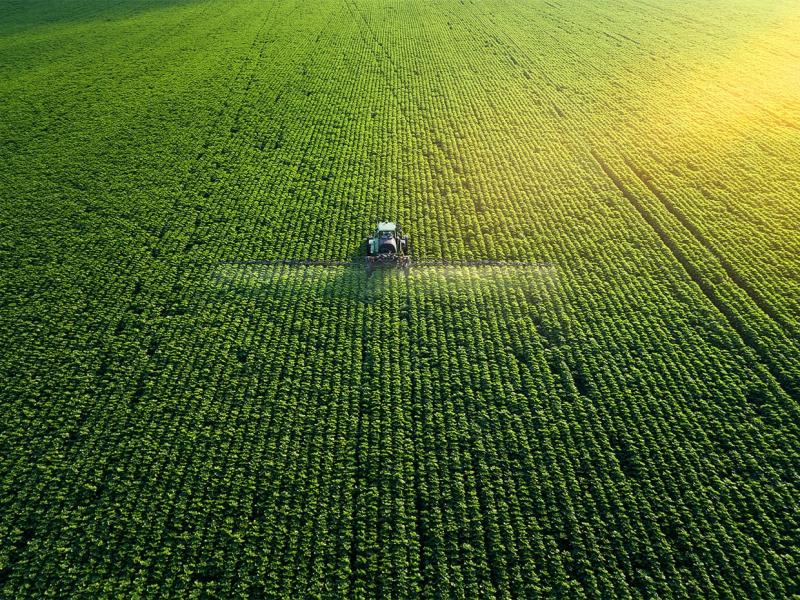AUTHOR

The agricultural sector occupies a unique position in the climate landscape. It is simultaneously a significant contributor of greenhouse gas emissions, highly vulnerable to the impacts of climate change, and an essential part of the solution to addressing the climate crisis.
In 2022-23, agriculture was responsible for approximately 18.6% of Australia’s total greenhouse gas emissions, with most of these emissions arising from biological processes. Methane produced through enteric fermentation in livestock digestion, along with nitrous oxide released from fertilised soils and manure management, are the primary contributors. Unlike carbon dioxide, these gases are far more potent in their global warming potential, amplifying the sector’s impact despite relatively lower emission volumes compared to fossil fuel industries.
At the same time, agriculture has the potential to play a central role in carbon sequestration. Natural assets such as grasslands, forests, and soil systems function as vital carbon sinks. Through photosynthesis, vegetation absorbs atmospheric carbon dioxide, while healthy soils retain organic carbon and enhance ecosystem stability.
This dual role places agriculture at the heart of both climate mitigation and adaptation efforts, offering a significant contribution in Australia’s path to net-zero.
Climate Vulnerabilities in Agriculture
Agriculture’s deep reliance on environmental and climatic conditions makes it especially exposed to physical climate risks. As climate patterns shift, the sector faces increasing pressure to adapt:
- Heat stress, prolonged droughts, and increasingly erratic rainfall are already reducing crop yields and livestock productivity. These impacts are most severe in rain-fed systems and regions with limited adaptive capacity.
- Disruptions in hydrological cycles are limiting water availability for critical uses such as irrigation, animal hydration, and crop processing, challenging the viability of many traditional farming systems.
- Extreme weather events, including floods, storms, and heatwaves, accelerate soil erosion, deplete nutrients, and degrade arable land. These changes can significantly reduce productivity and require substantial investment in remediation.
- Rising temperatures and changing ecosystems are expanding the range and prevalence of pests and diseases, while increasing fire risk and contributing to biodiversity loss on farms.
These compounding challenges place significant stress on agricultural productivity, food security, and farm viability.
Transition Risks and Regulatory Pressures
Beyond physical impacts, agriculture is facing growing transition risks as Australia accelerates its shift toward a low-carbon economy. These risks include changing policy settings, shifting investor expectations, and growing scrutiny from supply chain partners and consumers.
One of the most significant developments is the introduction of mandatory climate-related financial disclosures through the Australian Sustainability Reporting Standards, which align with international expectations and reflect the increasing integration of climate risks into mainstream financial reporting.
The ‘Australian Accounting Standards Board (AASB) S2 Climate-related Financial Disclosures’ standard came into effect in January 2025. It introduces a range of mandatory disclosure obligations for large and medium-sized companies, particularly those with substantial operations, assets, or revenues. While farmers and small agricultural businesses are not directly subject to these requirements at this stage, the indirect impacts for producers who supply to major food processors, retailers and exporters can be significant.
Under AASB S2, major food companies and agribusinesses are required to account for Scope 3 greenhouse gas emissions, which means they must collect detailed data from farmers and land managers in their value chains.
This is driving an increase in requests for:
- Farm-level emissions calculations, aligned with recognised methodologies and carbon accounting frameworks;
- Participation in emissions reduction programs;
- Documentation of climate targets, certifications, or accreditations that demonstrate alignment with supply chain partners' climate strategies.
In practice, this means that farmers, even if not legally required to report under AASB S2, are increasingly expected to provide transparent, verifiable information to retain market access, secure contracts, and maintain investor or lender confidence.
Emerging Opportunities for Agriculture
Despite the risks, the low-carbon transition presents significant opportunities for those in the agricultural sector who are prepared to innovate and adapt.
Producers who proactively implement climate-smart practices are well positioned to:
- Strengthen market access by aligning with the sustainability expectations of processors, retailers, and consumers;
- Enhance productivity and reduce input costs through efficient resource use, and improved soil health;
- Build resilience to future shocks, including extreme weather, input price volatility, and supply chain disruption;
- Generate new income streams through participation in carbon credit and biodiversity markets;
- Future-proof operations against emerging policies and investor scrutiny.
Adoption of innovative approaches, such as precision agriculture, renewable energy systems, rotational grazing, or agroforestry, can enable producers to shift from being climate-vulnerable to climate-resilient.
Practical Steps for Farmers
To prepare for the climate-related demands of the future, producers can take several practical, phased steps:
- Calculate Emissions
Begin by assessing your farm’s greenhouse gas emissions to identify key sources such as livestock, fertilisers, machinery, and land use change. Digital tools and online calculators tailored to Australian farm systems are increasingly available. RSM can also assist with developing your carbon inventory. - Understand Your Risk Profile
Undertake a climate risk assessment to evaluate exposure to extreme weather events, water scarcity, and land degradation. Use this insight to guide investment in adaptation strategies, such as crop diversification or water-efficient infrastructure. - Reduce Emissions
Identify emission reduction opportunities that align with your farm’s long-term goals. These might include:- Exploring feed additives such as 3-NOP (Bovaer) or seaweed (e.g. Asparagopsis) which are showing promising results in lowering methane emissions from ruminants.
- Improving grazing management to increase pasture quality and digestibility, reducing methane per unit of meat or milk produced.
- Selectively breeding for low-emissions traits, feed efficiency, or faster weight gain.
- Adopting precision fertiliser application using variable-rate technology and soil testing to match nutrient supply with crop demand.
- Applying enhanced-efficiency fertilisers such as nitrification inhibitors or slow-release formulations.
- Using organic amendments like compost, biochar, or manure that improve soil health while reducing reliance on synthetic inputs.
- Cover cropping with legumes, which fix nitrogen naturally and can reduce the need for fertiliser.
- Developing covered composting or aerated systems to reduce anaerobic decomposition and emissions.
- Implementing effluent treatment technologies, including biogas systems, to capture methane for energy use while reducing emissions.
- Installing renewable energy such as solar panels, wind turbines, or biodigesters to reduce emissions and energy costs.
- Investing in energy-efficient machinery and irrigation systems, including variable-speed pumps and no-till seeding equipment.
- Switching to electric or hybrid vehicles and machinery as technology becomes available.
- Enhance Carbon Sequestration
Adopt land management practices that increase soil organic matter, such as cover cropping, no-till farming, and rotational grazing. Planting trees and native vegetation along riparian corridors and shelterbelts can enhance both carbon storage and biodiversity outcomes.
The Role of Farmers as Climate Leaders
Farmers are not just stakeholders in the climate conversation, they are key agents of change. Their knowledge of the land, ability to adapt, and deep connection to natural systems place them at the centre of both climate risk and opportunity. As stewards of more than half of Australia’s landmass, their decisions have a direct influence on national environmental outcomes.
By adopting climate-smart practices and engaging with emerging reporting and sustainability frameworks, producers can position themselves to manage risk, improve productivity, and meet growing market expectations. While the challenges are significant, so too are the opportunities, from emissions reduction to improved resilience and long-term business viability.
Supporting farmers to navigate this transition will be critical to meeting Australia’s climate goals and maintaining food security in a changing climate.
For more information, reach out to your local RSM office.




